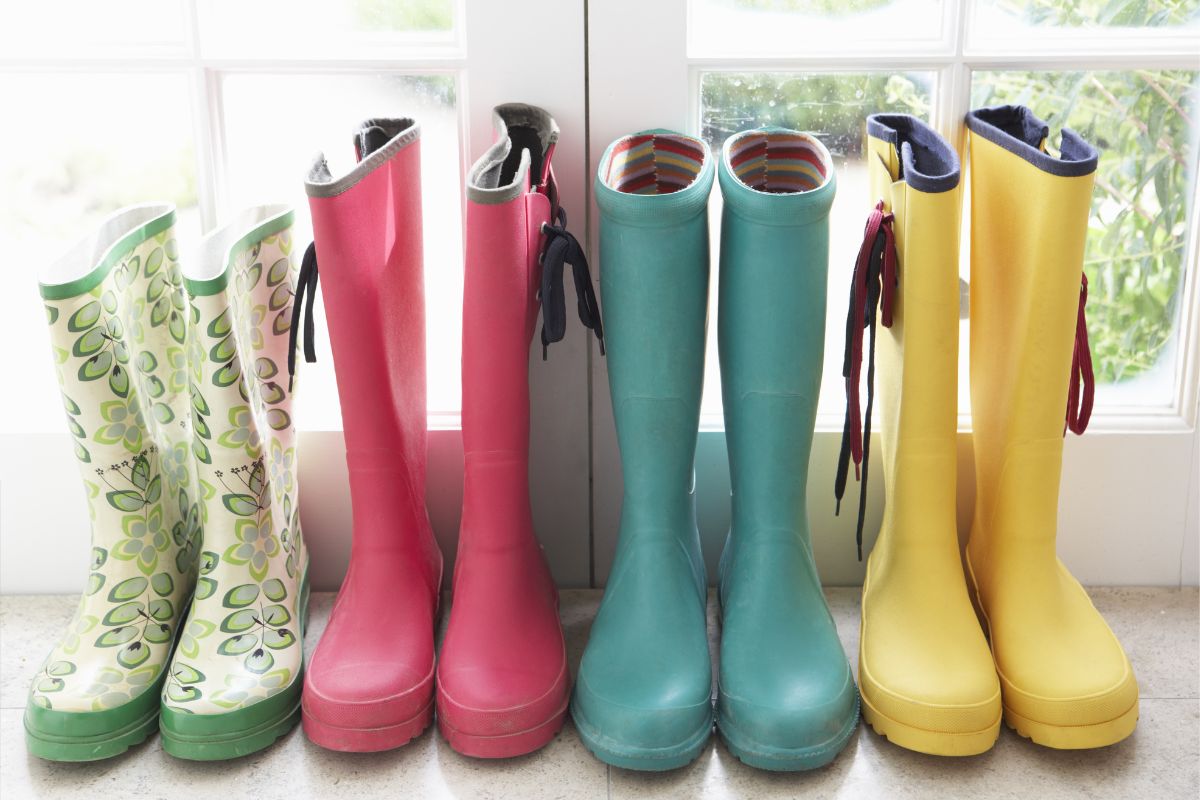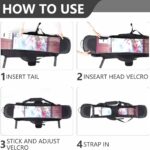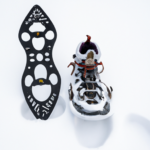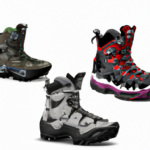As the sun slowly fades and we enter the winter months, you might be thinking that it’s time to dig out the rain boots. Perfect for those days when the heavens open and we are soaked through.
However, if you live in an even colder climate you might experience something either worse or better than rain. Snow.

While it looks gorgeous when it first lands, once you begin to venture into the outdoors it can quickly become a nightmare. Especially if you don’t have the right footwear?
So, are rain boots good for keeping your feet free and dry from the snow? In this article we go over everything you need to know about rain boots and the snow.
Keep reading to find out more!
Differences Between Snow Boots & Rain Boots
Before you go out to purchase a pair of snow boots this winter, it is important to understand the differences between snow boots and rain boots. You might even be able to save yourself some cash!
Snow Boots
Snow boots are generally made from sturdier materials that keep the water and cold out. They are typically made from leather, nylon, wool, or even rubber.
While these materials keep the cold out, they often have a fur or faux fur lining to keep your feet warm.
This is the biggest difference between rain boots and snow boots.
However, that insulation has a cost. Typically, snow boots are heavier. Even ankle-length snow boots can grow uncomfortable after being worn for a day.
Snow boots, due to the stiff materials they are made from are far less flexible than rain boots, This can make breaking them in and wearing them everyday rather uncomfortable.
Snow boots are often ankle boots, whereas rain boots have a tendency to be on the higher side. Due to the weight of the insulating layers, high snow boots may be too cumbersome to use for daily commute.
Rain Boots
Similar to snow boots, rain boots are waterproof. However, they are more commonly made from rubber or PVC. This allows them to be waterproof while remaining flexible when you walk.
They are more commonly designed to be tall, often coming up to the shin or even the knee.
However, it has become more fashionable for rain boots to be ankle length. An ankle length rain boots is generally known as a Duck Boot.
In order for rain boots to remain flexible and lightweight they can have no additional material weighing them down.
This means they have no insulation. With more of a focus on being waterproof with less on keeping your feet warm.
Rain boots don’t often have the best traction, but they do offer some traction. This is mostly due to the fact that their soles are smooth and untextured.
They maintain their lightweight as a result of maintaining a smoother, sleeker appearance.
As you can see the design of both rain boots and snow boots are rather similar, however, that is where the similarities end. While a snow boot will keep your feet dry, they will become heavy and uncomfortable.
Rain boots are more lightweight and comfortable but offer no insulation for the cold air.
So, Are Rain Boots Good For Snow?

Yes, rain boots are good for snow. They are extremely waterproof, durable and lightweight. Perfect if you are hiking or walking around in the snow for most of the day.
While they are generally not lined with fur they can provide a small amount of insulation to keep you warm in chilly conditions.
However, if you are in colder conditions you are going to need to invest in insulated boots or find something else to help provide warmth and keep it in.
It’s crucial to choose an insulating weight that matches your activity level and climate.
Most rubber boots come with 200g to 600g of synthetic insulation, but certain models come with even more insulation for extremely cold or extremely hot weather.
While 200 and 400 g will be sufficiently warm for the majority of US temperatures, we must emphasize that there will be some exceptions. Boots with 600g or more of insulation may be required if you live and work in dangerously low temperatures.
However, if you are simply walking a block or 2 or going for a short walk in the park then regular rain boots should be insulated enough to keep you warm until you get home.
If you are going to be outside for most of the day in freezing conditions, you will require something stronger.
Types Of Insulation For Rain Boots
As you search from rain boots you will notice that they are often insulated using a common range of materials. Including:
- Synthetic Insulation. This is the most common type of insulation for rain boots. With 3M Thinsulate, this synthetic material is effective in trapping heat while remaining lightweight.
- Furs & Fabrics Insulation. Some of the most all-natural, efficient, and possibly pricey boot insulation solutions available are fur liners. Although synthetic insulation is considerably more frequently found in rubber boots than fur, fur-lined rubber boots do exist. Now boot companies use faux fur to insulate their boots allowing the cost to come down while remaining warm.
- High Sock & Liners. The most common way to insulate your rain boots at home is to invest in a pair of thick high socks or liners. This will add insulation without having to purchase new rain boots.
Final Thoughts
In short, rain boots are good for snow. While they may not be as insulated as snow boots, they will still keep your feet dry.
Rain boots are a lot more lightweight and flexible than snow boots making them more comfortable to wear for longer periods of time.
Got a good pair of rain boots but they don’t keep your feet warm? Add a pair of thick, high socks or liner to your boots for some added warmth.
So, grab your rain boots and enjoy walking in the snow! Don’t forget your hat and gloves!
- How to Choose a Skim Board - September 10, 2023
- is Skim Boarding Hard? - February 8, 2023
- How To Wax a skim board - February 8, 2023










